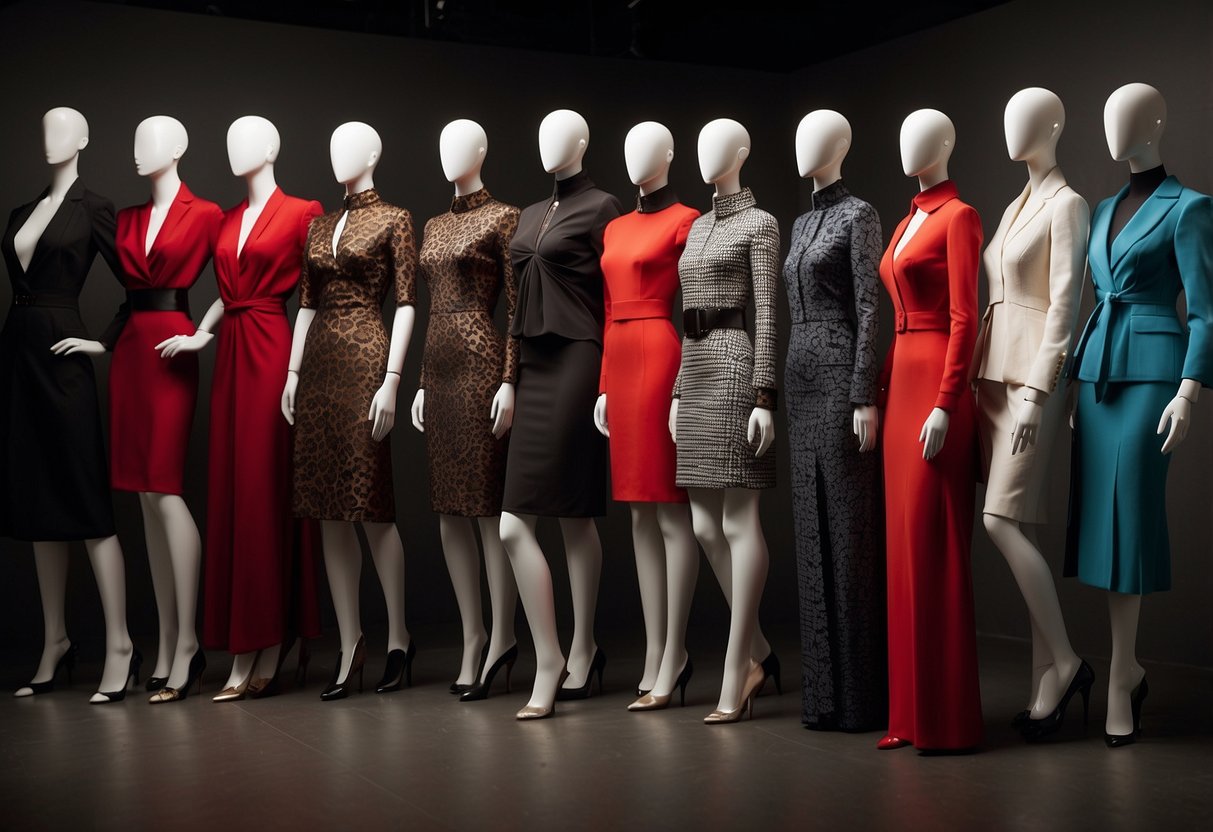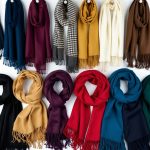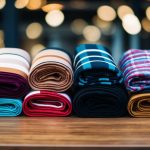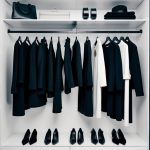
The Role of Color and Pattern
The colors and patterns a person chooses can significantly impact how their outfit accentuates their body type. Certain colors and patterns can create visual illusions that enhance or downplay different areas of the body.
Choosing the Right Colors
Color can be a powerful tool in fashion. Darker colors like black, navy, and deep greens tend to have a slimming effect, making areas appear smaller. Conversely, lighter colors like white, beige, and pastels can make areas look more prominent. This can be helpful for those looking to balance proportions or highlight specific parts of their body.
Monochromatic outfits elongate the body by creating a continuous line from head to toe. This can be particularly flattering for shorter individuals. In contrast, color blocking can create visual breaks in the body, which can help define the waist or highlight curves. It’s also useful to consider skin tone when selecting colors, as certain hues can make the skin appear more vibrant or muted.
Working with Patterns
Patterns can draw attention to specific areas of the body. Vertical stripes can elongate and slim the figure, making them a great choice for those looking to add height or slenderness. Horizontal stripes, on the other hand, can make areas appear broader, which can be beneficial for adding width to narrow shoulders or hips.
Small, intricate patterns can be less overwhelming and are generally more flattering for most body types. In contrast, large, bold patterns can dominate and may add visual bulk. For those hesitant about patterns, starting with smaller accents, like a patterned scarf or belt, can be an easy way to incorporate them without overwhelming the outfit. Understanding how different patterns interact with one’s body shape is key to finding the most flattering look.
Accessorizing Your Outfits
Finding the right accessories can elevate any outfit, emphasizing your unique style and enhancing your body type’s best features. It’s about choosing items that complement and add personality to your clothing.
The Power of Accessories
Accessories have the remarkable ability to transform an outfit. They can make a simple dress look elegant or add a touch of sophistication to casual wear. Jewelry like necklaces, earrings, and bracelets draw attention to your face and hands, creating focal points. Scarves and belts can accentuate your waist or add color and texture. Handbags and shoes also play vital roles, providing practical utility while enhancing the overall look.
The right pair of sunglasses or a carefully chosen hat can add intrigue and balance proportions. Using accessories allows one to express personal style and adapt outfits to different occasions without a complete wardrobe overhaul. Accessories also offer versatility, making it easy to dress up or down depending on the event.
Selecting the Perfect Accessories
Choosing accessories that flatter your body type and outfit involves a mix of color, scale, and style. Start by considering the color palette. Complementary colors can make your accessories stand out, while matching tones create a cohesive look. Scale is essential; petite individuals may opt for smaller, delicate pieces, whereas those with larger frames might find bolder accessories more fitting.
Think about the outfit’s style—casual outfits often pair well with understated accessories, while formal attire might require more refined pieces. Personal preference and comfort should always guide the selection. Practicality also matters; choose pieces that you’ll feel comfortable wearing throughout the day. Accessories should enhance, not overshadow, the ensemble.
Fabrics and Textiles
Selecting the right fabrics is crucial for creating flattering outfits. Different textiles provide various textures, weights, and drapes, influencing how clothing fits and feels on diverse body types. Understanding the distinct qualities of these materials helps in choosing garments that enhance one’s figure.
Cotton is a popular choice due to its breathability and comfort. It works well for casual wear and can be tailored to fit different body shapes. Cotton blends, mixed with elastane, offer added stretch, making them a versatile option for many types of clothing.
Silk is a luxurious fabric that drapes elegantly, making it ideal for evening wear and special occasions. Its smooth texture can highlight body contours, providing a refined look. Silk items, such as blouses and dresses, add sophistication to any wardrobe.
Wool is known for its warmth and structure, commonly used in knitwear, coats, and suits. Its dense texture can add volume, making it a good choice for those seeking to create a more defined silhouette. Wool blends, combined with synthetic fibers, improve durability and stretch.
Linen, a lightweight and breathable material, is perfect for hot weather. It has a natural, relaxed appearance and can add an airy feel to summer outfits. Linen suits various body types, especially when tailored to fit well.
Jersey knit fabric provides excellent stretch and comfort, making it ideal for casual wear. This flexible material is often used in t-shirts, dresses, and leggings, adapting well to different figures. Its stretchability ensures ease of movement while maintaining a snug fit.
Denim is a staple for everyday wear, known for its durability and versatility. It suits a range of body types, from skinny to curvy, by offering various cuts and styles in jeans and jackets. The thickness of denim helps in shaping and supporting the body.



